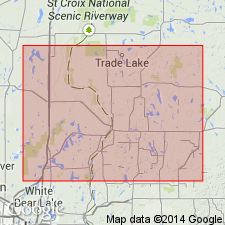
- Usage in publication:
-
- Franconia sandstone
- Modifications:
-
- Named
- Dominant lithology:
-
- Sandstone
- AAPG geologic province:
-
- Sioux uplift
Berkey, C.P., 1897, Geology of the St. Croix Dalles: American Geologist, v. 20, p. 345-383.
Summary:
Franconia sandstone (new name) described as compact and thick-bedded layers overlain by fine incoherent sand. Contains thin seams of green shale. Thickness is 100 ft. Underlies St. Lawrence dolomites and shales and overlies Dresbach shales at St. Croix Dalles. Named for exposures in vicinity of Franconia, Chisago Co., MN.
Source: GNU records (USGS DDS-6; Reston GNULEX).
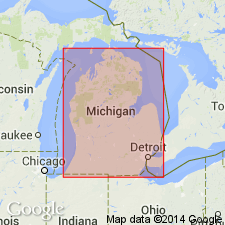
- Usage in publication:
-
- Franconia Formation
- Modifications:
-
- Revised
- AAPG geologic province:
-
- Michigan basin
Summary:
Munising retained at Formation rank north of line shown in fig. 8. In Upper Peninsula includes Miners Castle Sandstone and Chapel Rock Sandstone Members. In Lower Peninsula Munising raised to Group rank and includes Franconia Formation, Galesville Sandstone, and Eau Claire Formations.
Source: GNU records (USGS DDS-6; Reston GNULEX).
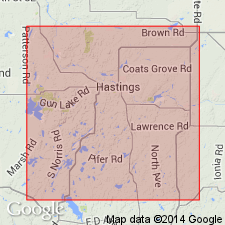
- Usage in publication:
-
- Franconia Member
- Modifications:
-
- Revised
- AAPG geologic province:
-
- Michigan basin
Summary:
In the subsurface of MI, the Munising Formation of the Lake Superior Group includes (descending) the Franconia Sandstone Member, the Dresbach Sandstone Member, the Eau Claire Member, and the Mount Simon Sandstone Member. Unit underlies the Trempealeau Formation of the Lake Superior Group and overlies the Jacobsville Sandstone. Age is Late Cambrian.
Source: GNU records (USGS DDS-6; Reston GNULEX).
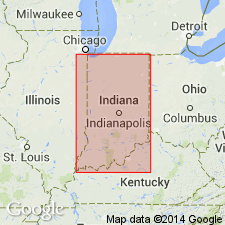
- Usage in publication:
-
- Franconia Formation
- Modifications:
-
- Areal extent
- Revised
- AAPG geologic province:
-
- Michigan basin
Summary:
Munising extended to IN as Group within Potsdam Supergroup. In northwest IN, consists of the Franconia Formation (top), the Ironton Sandstone, the Galesville Sandstone, and the Eau Claire Formation. Unit includes only the Eau Claire in southwest IN, and only the Davis Formation (top) and the Eau Claire throughout most of the state. Underlies Potosi Dolomite and overlies Mount Simon Sandstone.
Source: GNU records (USGS DDS-6; Reston GNULEX).
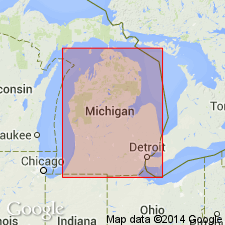
- Usage in publication:
-
- Franconia Formation
- Modifications:
-
- Overview
- AAPG geologic province:
-
- Michigan basin
Summary:
In the southern peninsula of MI, Eau Claire, Galesville, and Franconia Formations are collectively referred to the Munising Group because of their genetic relations. In the northern peninsula, Munising is retained at formation rank. This nomenclature follows Catacosinos (1973, 1974).
Source: GNU records (USGS DDS-6; Reston GNULEX).
For more information, please contact Nancy Stamm, Geologic Names Committee Secretary.
Asterisk (*) indicates published by U.S. Geological Survey authors.
"No current usage" (†) implies that a name has been abandoned or has fallen into disuse. Former usage and, if known, replacement name given in parentheses ( ).
Slash (/) indicates name conflicts with nomenclatural guidelines (CSN, 1933; ACSN, 1961, 1970; NACSN, 1983, 2005, 2021). May be explained within brackets ([ ]).

